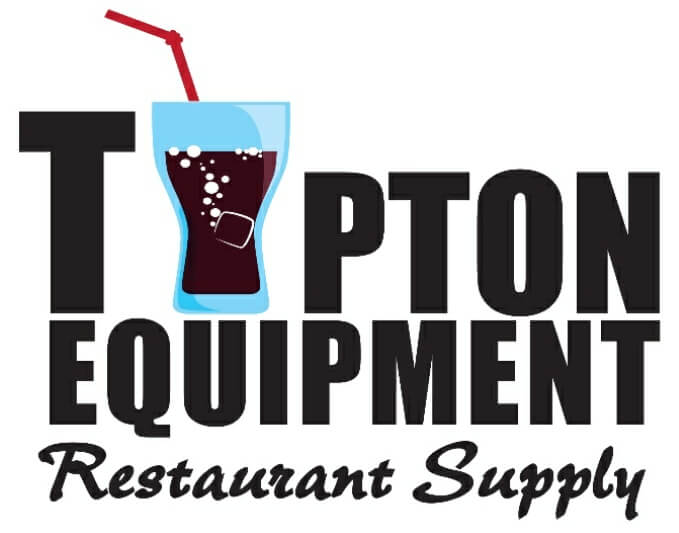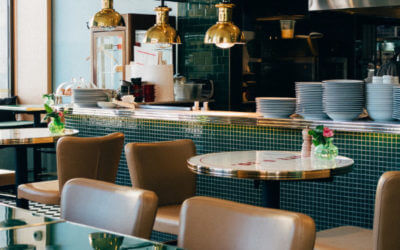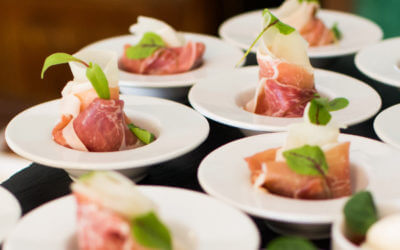What’s in a Cooking Pot? How to Choose the Right One
March 19, 2018As a restaurant owner, your cooking needs might vary.
Did you know that a good quality pot can greatly improve your cooking experience, while also improving the quality of your cooking? This cooking equipment is a very important one that cannot be done away with despite all of the advancements in technology.
Rather than purchasing many different sizes, shapes and kinds of this cooking equipment, a few carefully selected pieces might be all you need. Consider a few important tips to keep in mind when shopping for a quality pot.
Size
Size is a very important factor when selecting any cooking equipment. It is thus important that you are decided on size before you begin shopping. Keep in mind that pots vary wildly in size, generally ranging from 6 to 20 quarts for residential usage. However, as a restaurant owner serving a large customer base you might seek a bigger version of this cooking equipment, and you’d be sure to find those above 20 quarts if needed. But pots 12 quarts and above should do. Note that as a pot gets larger it is also likely to get heavier – depending on the pot material.
Materials
As with every cooking equipment, the materials from which pots are made play a huge role in their ease of use and specific functional applications. Consider a few:
Stainless steel: Smooth, shiny surface metal for easy visibility. It is a poor heat conductor, but it also is entirely nonreactive to any food type and very durable. It is also a very versatile cooking equipment for many food types.
Aluminum: They heat faster than stainless steel, and are usually very lightweight, but they also require more care and are more difficult to clean and maintain due to their ability to interact with foods that are acidic, alkaline, and sulfurous.
Copper: A great heat conductor, copper heats quickly and is warm on the eye. It is also highly reactive with food – interacting poorly with acidic and alkaline foods, but will last you if the pots are lined and you polish it often enough.
Non-stick Coating: High resistance to heat and abrasion, and useful for solid foods with high sticking possibility.
Cast iron: Heats up slowly but retains heat for long. It needs regular drying and oiling to keep it safe but that can be solved by purchasing one with enamel coating.
Shape
This cooking equipment comes in a variety of shapes. While they are conventionally tall and narrow, pots particularly designed for cooking soups are usually short and wide to allow for easy stirring. Wide pots, though, do not evenly spread heat around due to their large bases, while narrow pots are usually more consistent with their heat spread due to their narrow base.
Handles and Lids
As a restaurant owner, you would probably be needing this cooking equipment to not only serve you well on the stove but to also be heatproof for oven use. While you are likely to seek out handles that do not retain heat, such as plastic and wooden handles, these handles may have issues with heat. In this case, stainless steel handles are best for you. Properly welded handles might also serve you longer than riveted ones.
Construction
Pots with thick and heavy bases transfer heat at a much slower rate than thinner pots. These kind of pots are great for long, slow cooking. When this kitchen equipment has a thick base, it prevents ingredients from sticking to the bottom of pots. Pots with composite builds – whether these are all-clad composite pots or base insert composite pots – are also better at transferring heat evenly through a pot.
Choosing the right cooking equipment for you can feel overwhelming at times. But it shouldn’t be. Consider the types of food you’ll be cooking and the pots that will best satisfy these needs, also consider your budget (this cooking equipment can get really expensive when it becomes more specialized and advanced) when selecting the right one for you.
Kitchen Equipment: Choosing the Right Cutting Board
Every kitchen, from a food truck to a large restaurant, needs cutting boards. From vegetables to bread to meat and fish, your chefs and cooks have to chop things every day. Have you put a lot of thought into this important piece of kitchen equipment? Like many other...
Catering to Generation Z
As time marches on, we continue to have new generations arising behind the ones we’ve already named. Most recently everyone has been focused on Millennials, whose tech-savvy and focus on experiences over things have shifted the face of every industry. Now, there’s a...
4 Ways to Keep Your Restaurant Employees Engaged
You can have everything you need to run an amazing restaurant – a great menu, incredible chef, the best location, perfect pricing, and top-of-the-line kitchen equipment. But even with all of that, you won’t succeed if your employees are disengaged and unprofessional....
Kitchen Fun : Food and the Oscars
Hollywood’s biggest night was February 24th, 2019, and was it ever a show. There were stars, glitz, glamour, and amazing outfits everywhere. There were also cameras catching every moment, from the red carpet to the after-parties. What happened at the show and after...
4 Keys to Successful Commercial Kitchen Design
If you’re opening a new restaurant or renovating your existing kitchen, you probably already have some ideas about how it should look. However, it’s important to look beyond your own ideas and understand the keys to good design in general. This will help you...
Bring Together Your Back and Front of House
Does your restaurant feel like a simmering battle between the back of house (BOH) and front of house (FOH)? Or do both units get along famously? If your restaurant is like many, you find yourself somewhere in the middle. Rarely do you have an all-out war, but...
Commercial Kitchen Fun: Cooking With Mustard
One of the things that make owning a restaurant so fun is the ability to be creative with your menu. With the help of your chef and cooks, you can come up with some really fun dishes to serve. To get your imagination going, we’re going to share some fun dishes that...
Drive Traffic to Your Restaurant From Instagram
You have a lot of restaurant equipment that you need to make your location run smoothly. You might think about your point-of-sale system, refrigeration units, cooking equipment, and more. But what about Instagram? That’s right, a social media platform can be one of...
Handling Theft in Your Convenience Store
Running a convenience store is challenging to say the least. You need to staff it, but not with too many people. Then again, too few and you have a lot of problems – including theft. There are three groups that can be responsible for product and money loss in your...
Kitchen Equipment Spotlight: How Clean is Your Coffee Pot?
If you were going to rank kitchen equipment based on how much work it does, the humble coffee pot has to be near the top. In almost every restaurant, people order coffee with their meal or dessert. The problem is that because the coffee pot is working so hard, it...
Should You Add a Food Truck to Your Restaurant?
If your restaurant is doing well, you might be thinking about opening a second location. After all, that’s usually the next step when it’s time to expand, right? Before you jump in, though, consider another option. Maybe having a food truck would be a better choice....
Kitchen Equipment Spotlight: How to Maintain a Commercial Freezer
Your commercial freezer can be a lifeline for your restaurant. Safe food storage is vital, and a high-quality freezer is essential kitchen equipment. However, a freezer is only as good as the maintenance that goes into it. Without proper care, your freezer will become...
Take Advantage of Your Customer’s Technology
Some restaurant owners hate seeing customers snapping photos of food – it means that the food isn’t eaten at its best, and sometimes it’s a sign of a table that’s going to be slow to turn over. Then there are other owners and managers who see an opportunity. The truth...
How to Reduce Turnover at Your Restaurant
Having the right employees can make or break your restaurant. You can have the best food and kitchen supplies, but tension in the back of the house can cause delays, poor morale, and even the loss of key staff. You can have a beautiful dining room, but surly wait...
Should Your Commercial Kitchen Consider Catering?
As a business owner, it’s important to always be looking for new ways to grow your business. There are a lot of ways to do this, and one of the most common for many restaurants is catering. Of course, catering changes how your commercial kitchen runs a lot of the...















